If you haven’t already done so, please read the FFY Introduction.

March Overview
Here’s a breakdown of what we’re covering in March:
- Ideal Customer/Client Exercise
- Spring: Calm Before the Storm
- Ordering
- Sowing
- Potting Up
- Transplanting
- High Tunnel
- Soil Tests
- Business Model: Delivery
- Business & Taxes
Ideal Customer/Client Exercise
This one is super important if you plan to sell what you grow (whether that’s flowers for markets/direct to florists/weddings, workshops, U-Pick, whatever). It might sound silly, but if you take the time to do it, it will improve your marketing and increase your conversion rates. It will help you write better copy for your newsletter, website, and social media.
Some circles call this Ideal Customer, Ideal Customer Profile, or Ideal Customer Avatar. I’m not sure who coined the term, but they all pretty much mean the same thing: This is an individual person who represents your ideal target market. I’m just going to refer to this person as an IC.
Creating an IC and writing to them specifically helps you get clear on your messaging and creates more compelling copy. The important thing to remember is that you cannot be everything to everyone. Trying to do so scatters your efforts. While it’s easy to think that a broader message attracts more customers, the opposite is true: If you’re talking to everyone, you’re talking to no one. Being too vague makes your message unclear and lacks personal connection and empathy.
Getting clear on who your IC is not only attracts the right customers, but it also repels the challenging ones. For example, my copy for potential wedding clients is written to attract couples who love nature and are willing to pay for that coveted-garden style, but are also flexible when it comes to design and specific flowers (this is done via email copy and our wedding information packet; admittedly, I need a page on my website for this, which is in the works).
While I have different ICs for different revenue streams, each IC is a very-specific person. Generally though, they are all badasses who value nature, aesthetics, authenticity, and spreading good into the world. For our cut flowers, my IC is actually one of my real-life customers. She’s a mom, a wife, a nurse, and a small business owner (she’s an incredibly-talented jewelry maker). She dresses enviably chic, values quality over quantity, and is generous, kind, and has a great sense of humor. She believes in the power of nature and in supporting women wherever they are at. Honestly, if I ever hire anyone, it will probably be her (that is, if her messages reminding me she’s available for hire are serious, haha, I smile just thinking of her now).
When I write my newsletter, I’m often writing to one of my best friends. While she’s not necessarily one of my customers, it helps me write authentically me, which is important to me when it comes to our newsletter. She’s insanely successful, beautiful, but does not take herself too seriously. “Girl Boss” is the cringiest term ever, but this woman is a boss. She’s a bad influence in the best possible way, but also incredibly deep and reflective and though she might give me $hit for my obsessions with old-fashioned hobbies, she admires it (much like I admire her keen business sense and clean, modern aesthetics). She often tells me she has no idea how we became friends because we are so vastly different, but we both know it’s our shared quick wit, self-deprecating humor, and the belief that sarcasm and laughter heals most things. As can a good meal with great wine. Sometimes she responds to my newsletters saying she can actually hear me as if I am talking to her, and that’s because I am!
While your IC can be many things, there is one requirement. This person must be willing, able, and excited to purchase what you’re offering. It’s not unusual that your IC is much like you (though they don’t have to be), but it’s important to put yourselves in their shoes, so you can get a better idea of who *they* are.
You want a deep understanding of your ICs fears and desires. I think fear-based marketing is gross, but fear is a super-powerful emotion. If you understand your IC’s deepest fears and desires, it can help you become more empathetic and compassionate. Understanding these powerful emotions means you can create products and/or experiences that truly help people!
So, when I say understand your ICs fears and desires, I mean from a compassionate lens, and how you can help create a solution for them. For example, maybe your IC is a busy mom, who’s managing a home and a career, and desires to do something simple, but nice just for herself (flowers) or maybe she fears her kids spend too much time in front of screens and wants to create more, meaningful memories with them, so just imagine what taking her kids to your farm for an experience in nature could do to help alleviate this fear (U-Pick).

When creating your IC, you want to get super specific. Remember that they need to be willing and able to buy what you’re selling, but after that, skies the limit. When you’re brainstorming about your IC, try to leave you and your business out of it. Only after you understand this person, then you write to and for them in your copy.
Put yourself in this person’s shoes and imagine you’re actually them. Either use a real-life customer you already have or imagine one. This person should have a name, and a face, and an age. What do they do for a living? How do they spend their days? Are they a parent? What’s their relationship status? What do they do for fun? How do they dress? What does their home aesthetic look like? What do they want more than anything in the world? What are their greatest fears in life? Marie Forleo suggests writing a diary entry as if you ARE this person. Have fun with it, don’t stress it, no one needs to see this but you.
P.S., getting specific does not mean that you are going to alienate customers. Focusing on one individual helps you connect emotionally and authentically. It does not mean repelling customers or clients who are not your specific IC. For example, I write my retail cut-flower copy to my real-life mom customer, but we have customers from all walks of life, ages, genders, and different cultural backgrounds. And although she’s a woman, we of course have customers who are men! In fact, one is a husband and dad, but he buys flowers for himself for his office because he likes them! We also have single men who buy for their moms and grandmas. The point is that identifying your IC does not mean alienating customers who are different from your IC.
Once you feel like you understand this person, start writing as if you’re writing to them! Remember to think about how you can be a positive in their life: how can you solve their problem, ease their pain, or bring them joy?
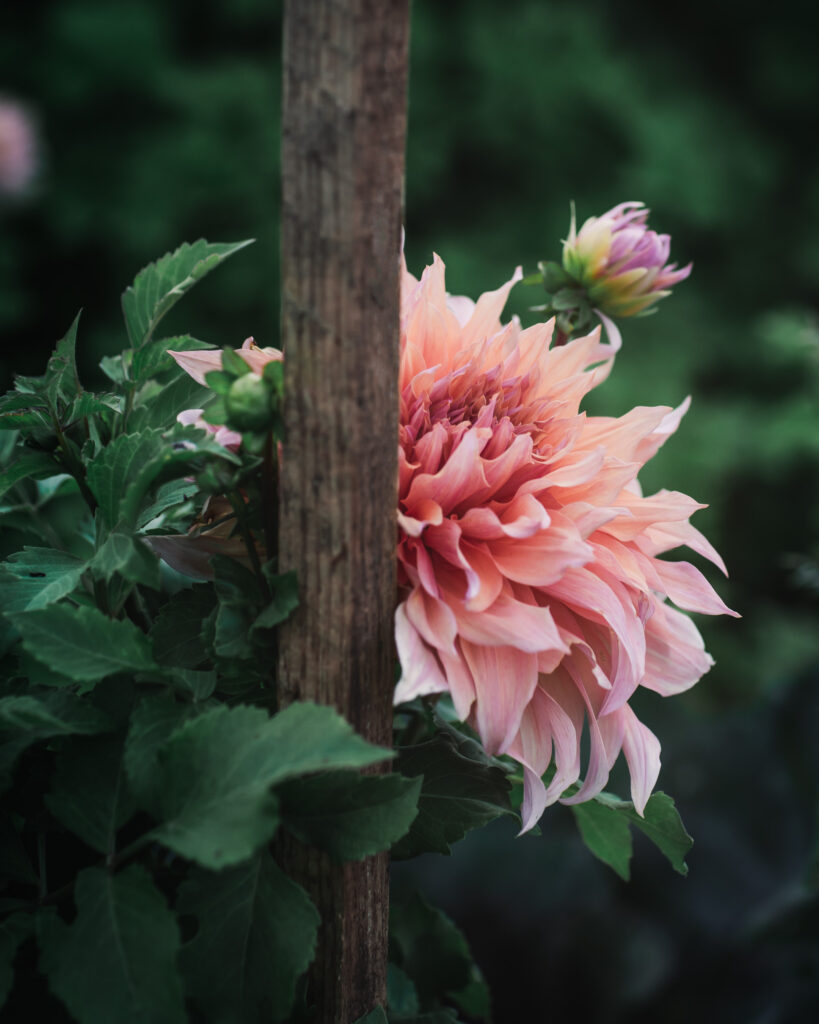
Spring: Calm Before the Storm
March in the midwest on a flower farm is probably the strangest month for me. If you’re on social media, you see growers from all around the country with spring flowers. The calendar might say that it’s spring, but we have nothing but snow on the ground, lol. While we’re itching to get started, it’s also the calm before the storm.
Every year, I think March will be slow, and it starts that way, but then things start to creep up! Between taxes, website updates, seed sowing ramping up, and our dahlia sale/giveaway, things escalate quickly!
If you’re interested in dahlia tuber sales, I encourage you to consider it. They are super fun, but they are also extremely time consuming and can be nerve wracking. Between the sale (and giveaway in our case), building the website, email communications, ecommerce, photos/descriptions, customer communication (questions, updates to orders, accidental wrong shipping addresses, etc.) it’s a lot, but it’s also rewarding. Being able to share these flowers we love so much is definitely soul-fulfilling.
Other things we’re doing this month in regard to tuber sales are constant checkins on the tubers to make sure they’re storing well. March is also when we’ll have our inspection by the WI Department of Agriculture. This is required prior to shipping tubers, because most states have requirements for this. It’s not something that’s talked about enough, so I wanted to call it out, but the best place to get information is by contacting your state’s Department of Ag. We’re also making sure everything is organized, so that once the weather is favorable for shipping, we’re ready to go. Many people are itching to get their tubers depending on state. We’re making sure we have all the supplies ready (boxes, packing material, cards, tape, baggies, labels, stickers, scissors, ink, paper, etc.).
I have also gained a tremendous amount of respect for anyone who works in packing and shipping. Packing orders sounds simple, but there’s a lot that goes into it to make sure that orders are correct and things ship smoothly. Numerous times while packing orders, Matt and I look at each and are like, are we dumb? Checklists and organization make things much smoother. We also give our local post office a heads up because they are a super small operation. They offer to pick them up, but vehicles are small and staff is limited, so we just drop all packages off. Everyone who works there is super nice, and cheering us on, it’s heartwarming. Something that’s important to learn from your local post office is their cutt-off times for pickups. For example, we know the mail carrier picks up packages from our local post around 1:00pm. So, as long as we get packages in before 12:30, they will go out the same day, minimizing time in transit.
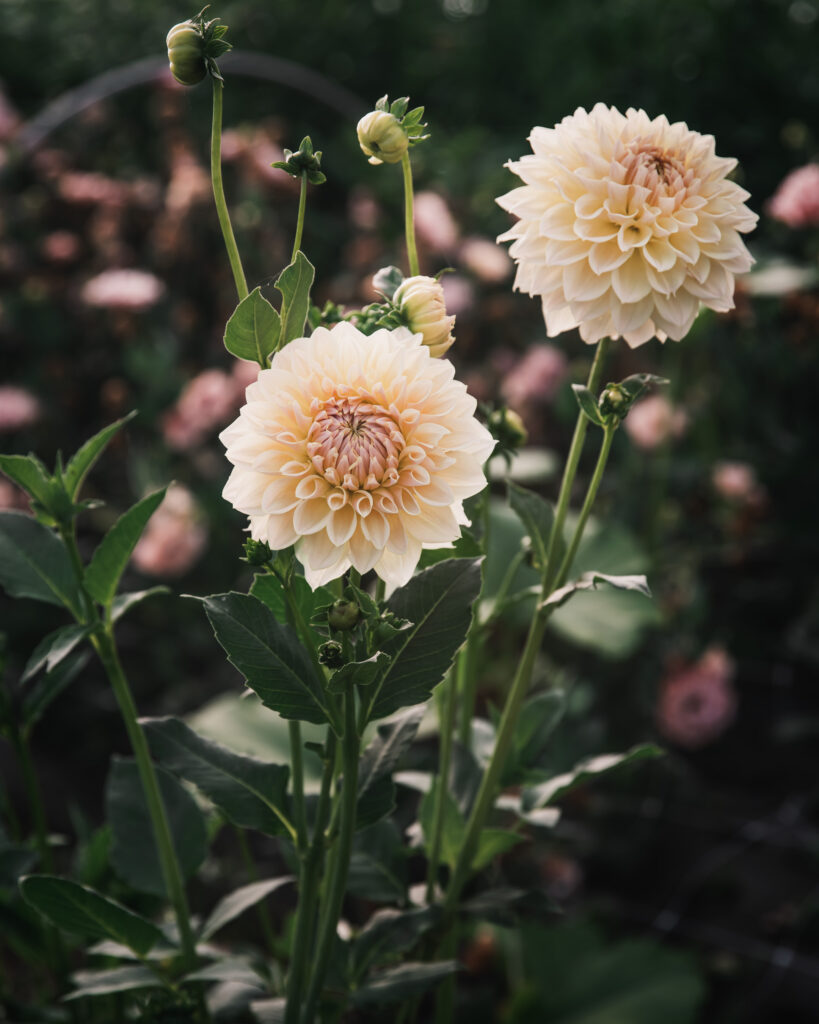
Ordering
Other than ordering shipping and packing materials for the dahlias, March orders are historically lower for me, win. Naturally, I am still ordering dahlia tubers though, HA! However, my seed purchases have pretty much fizzled out. I ordered some more black harvest buckets, because one can never have enough of those. I order these from our local greenhouse supplier Green Grove, but Johnny’s also offers them.
Sowing
I have barely cracked the surface on my March sowings, so I hope you’re doing better than me. I had a request for a white/orange event in June, so I needed to do some rearranging of the plan. I hope to get caught up this week! I also need to do another round of dahlia cuttings, including some I requested for early shipment at the end of March (this was a gamble, I hope they are OK in shipment).
- Black-eyed Susan (Rudbeckia)
- Hollyhock
- Spinach
- Sweet William
- Oregano
- Thyme
- Tomato, Cherry (High Tunnel)
- Tomato, Other (High Tunnel)
- Astragalus
- Viola
- Broccoli (mini sprouting)
- Chocolate lace flower
- Honeywort
- Kale / Chard
- Mignonette
- Queen Anne’s lace
- Pincushion (Scabiosa)
- Black-eyed Susan (THUNBERGIA ALATA)
- Lemon Balm
- Valerian
- Lace flower
- Calendula
- China aster
- Feverfew
- Jewels of Opar
- Strawflower
- Xeranthemum
- Love-in-a-puff vine
- Flowering tobacco
- Cucumber (High Tunnel)
- Sage
- Sweet Sultan
- Yarrow
- Clary sage
- Orach
- Cosmos
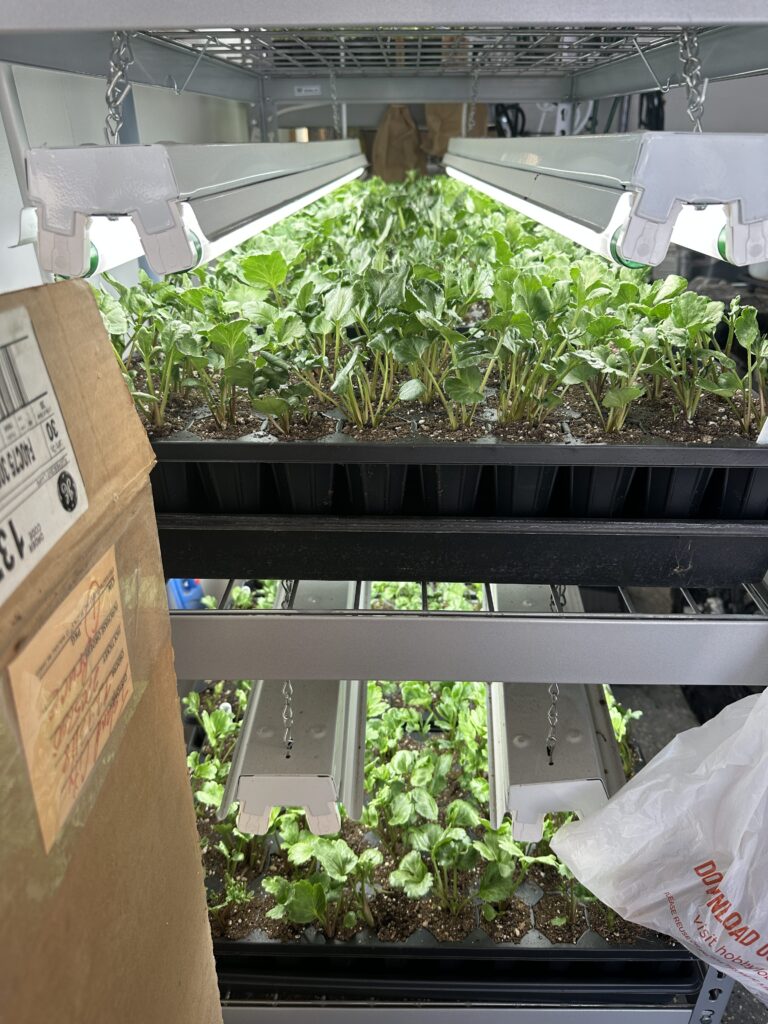
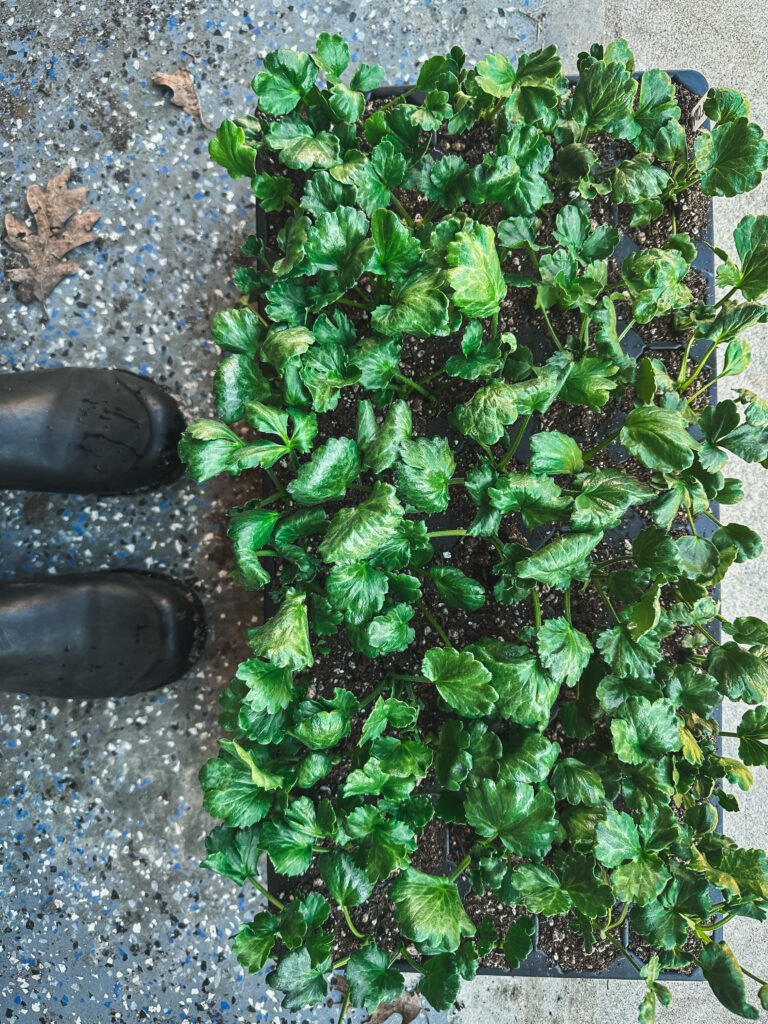
Potting Up
I’ve potted up eucalyptus and peppers, with plans to pot up delphinium, eryngium, and possibly lisianthus. I pot everything up into deep 50 cell trays, because I think these are a good enough size for growing on while also conserving space.
If you were here for January, you know that I’m trying to see how early I can get lisianthus blooms in our high tunnel. We had a shipment come last week. The shipping peeps put the boxes in our shop, which is super nice, but I did not know they were delivered, and they spent the night in there. It’s unheated, but insulated really well (thanks to Matt). Thank goodness they made it, I basically almost had a heart attack when Matt found them that morning. Farmer Bailey recommends potting up lisis if you are not able to transplant them within one week. I’ve left them in their 210 trays for weeks without issue, but planned on potting up just to give them more growing room for earlier production. However, life got busy, so I have not potted them up yet (too cold in our high tunnel to transplant, they probably won’t go out until April).
Transplanting
I had hoped to get the spring-planted ranunculus and anemone corms in the high tunnel, but we had some really cold days last week and into this week, down to the single digits. It looks like this is our last spell of single-digit temps this upcoming week (at least for the foreseeable future), so we’ll likely start transplanting as time allows. My main focus will be on ranunculus, anemones, snapdragons, and then getting beds/support ready for lisianthus and sweet peas.
High Tunnel
Ranunculus & Anemones
Speaking of the high tunnel, I thought I’d give an update on the overwintered ranunculus and anemones. As mentioned, we had single digits in the forecast last week. The weather was predicting as low as 5F. Once the plants were emerging, I had removed the hay and we created low tunnels for frost cloth. AG70 will protect maybe up to 8 degrees, so I was quite nervous about these low temps. Some kind folks on instagram suggested Christmas lights. We happen to have a plethora of old Christmas lights around the farm, so I rigged these up under the tunnel, and crossed my fingers.
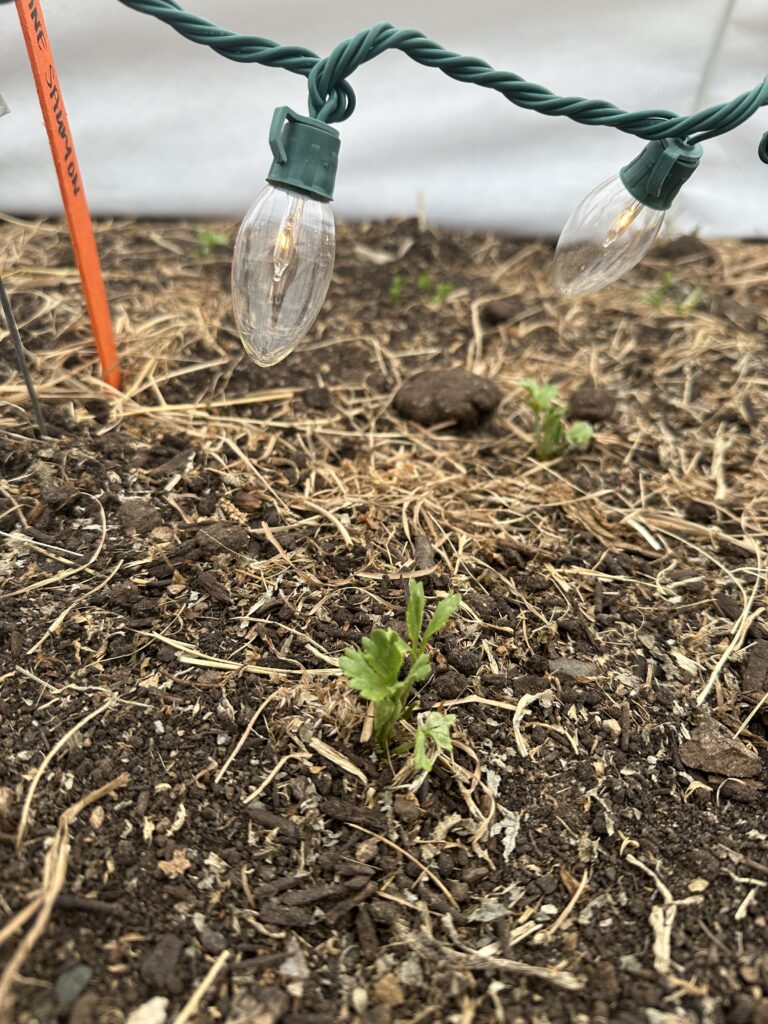
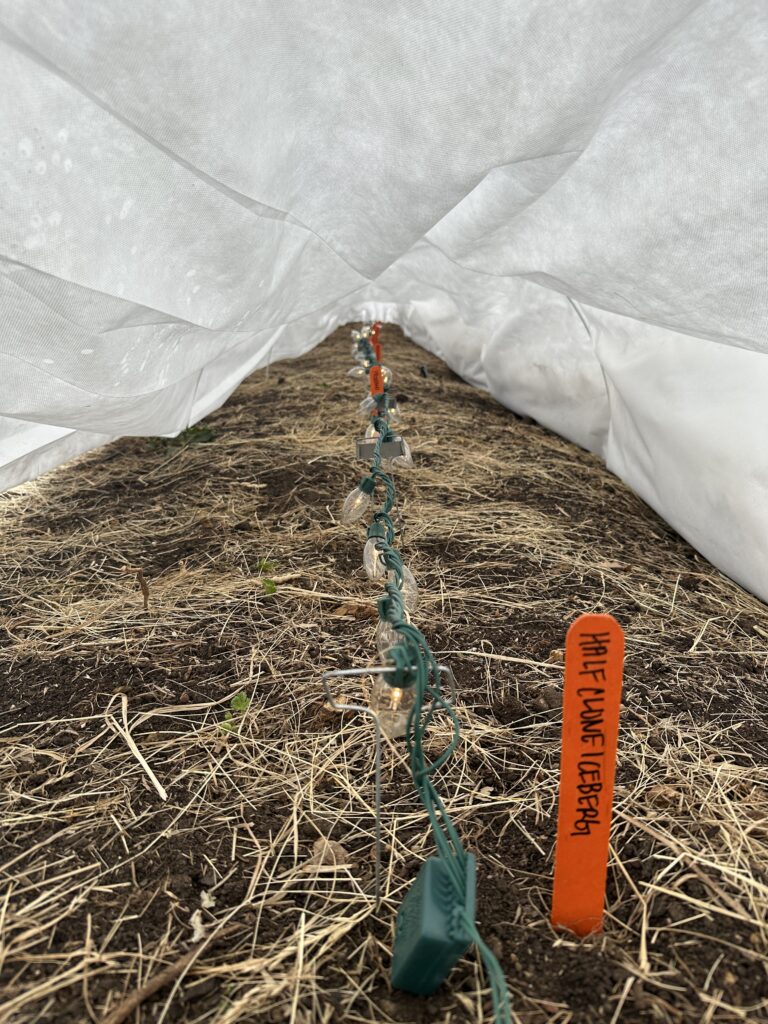
It was actually a bit comical, because we had dinner at Matt’s parents that night, so did not realize just how bright the lights were in the tunnel. On our way home, I asked Matt if he thought we’d be able to see the Christmas lights in the tunnel . . . .

It was quite the spectacle. I can only imagine what our neighbors think.
However, the lights seemed to help! I didn’t look at the temps outside until it was already 7am (sunrise), at which point it was 7F, so no doubt it was colder than that. Our neighbor said he saw –10F in his truck while driving before the sun was up. The local news said that one of the closest towns was –10 to –12F. Extreme weather watch says the low was 0F. Hard for me to honestly say how low it got, as all I know is that I saw 7F at 7am. However, much to my surprise, the thermometer in the high tunnel said the lowest it got under the frost cloth was 19F and the plants that sprouted were just fine! Still too early to tell what will come of this, but I’m keeping detailed notes and will dive deep on this in a future plant profile.
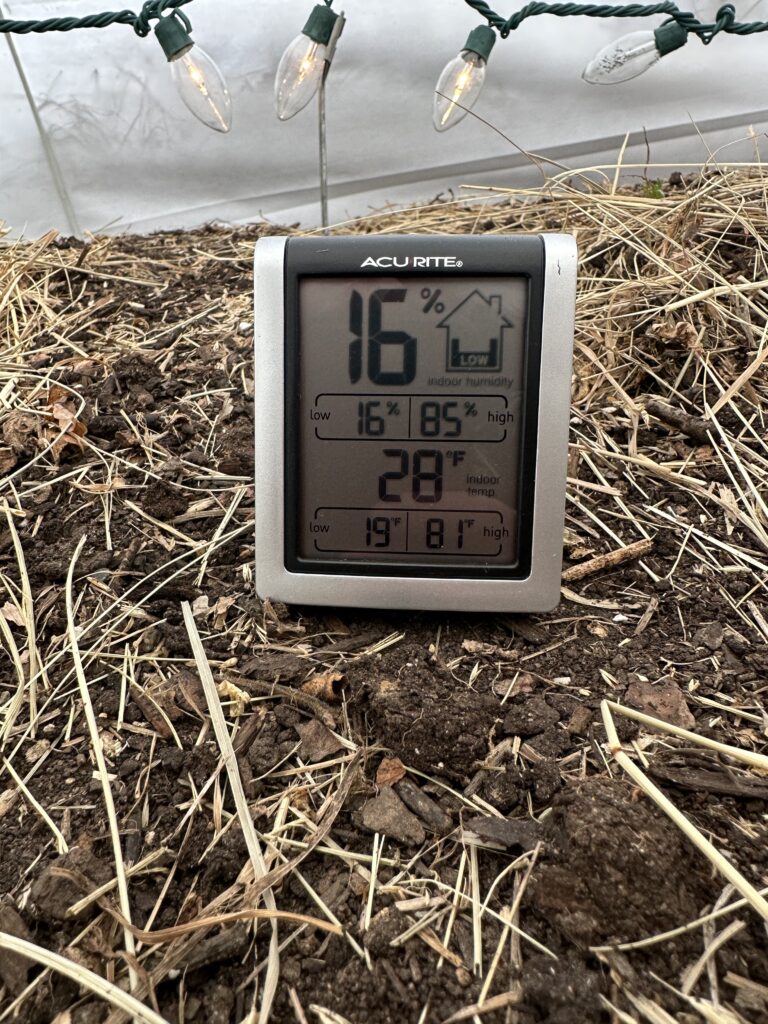
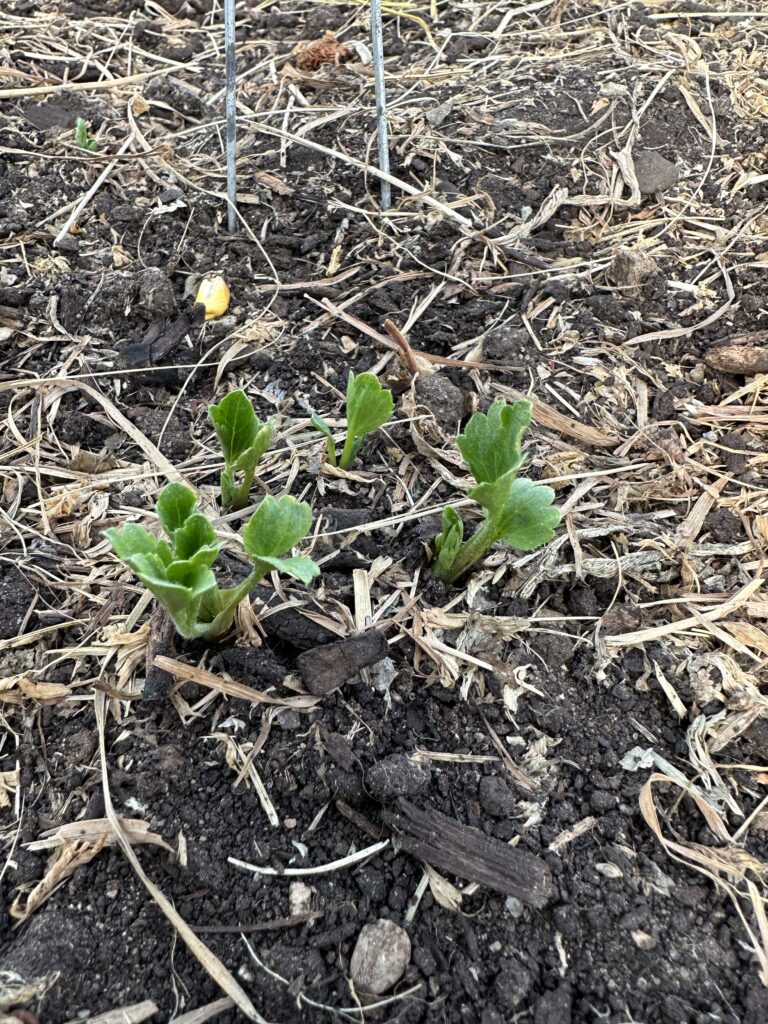
Pests
In other news, we also have mice. I’ve known there were mice in there (I’ve seen them, followed by shrieking). They nibble on things here and there and I don’t get too worked up about it. I’m kind of a live, let-live kind of farmer, but ugh, I dono anymore. They had been leaving the ranuncs and anemones alone . . . until now. Some of my biggest plants (ahem, a whole inch or so) were nibbled down to nubs. I know those little bastards were likely drawn in there due to the heat. Not sure what I’m going to do yet, but not cool, not cool.
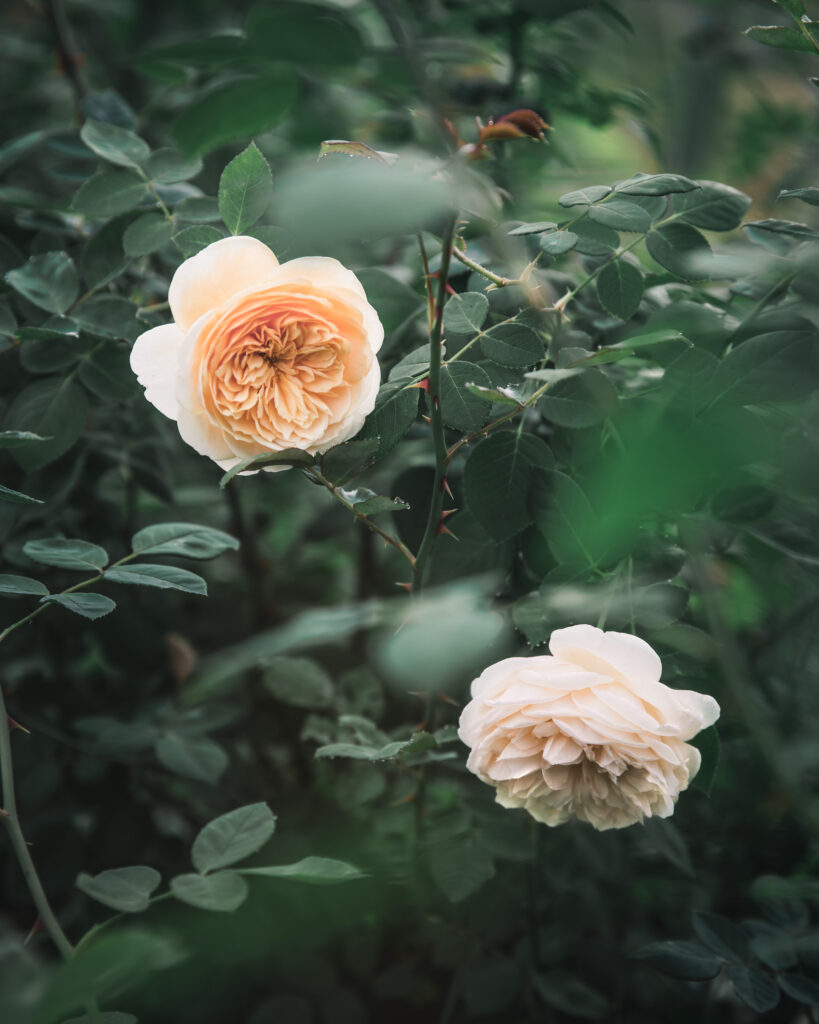


Roses
The other high tunnel task this time of year is pruning the roses. I won’t even think about pruning our outside roses until May, but new buds are just starting to swell on the roses in the high tunnel, so I’ve started pruning them, so they put energy in the right places. I like to follow Heirloom Roses method of pruning. This method applies to the most popular garden roses such as Hybrid Teas, Shrubs, and Floribundas, but Climbers and Ramblers require more specialized techniques.
To prune Hybrid Teas, Shrubs, and Floribundas, follow these steps:
P – PREPARE THE PLANT
Cut the plant back to about waist height so you can work safely (fall, we do waist high while spring we prune to 18–24″)
R – REMOVE ALL BROKEN, DEAD, DYING, OR DISEASED WOOD
Branches that look dry, shriveled or black should be removed at any time as they will no longer produce new growth. The healthy canes will be brown or green and firm. Remove canes that are crossing or rubbing, as they will create weak spots. Prune out all branches smaller than a pencil in diameter. In spring, prune out all but the healthiest/strongest 6–8 canes (floribundas and shrub roses may have more).
U – UNDERSTAND THE PLANT
Know what type of rose bush you are pruning, and how you want the bush to look as it grows out. Shape the plant with this future growth in mind.
Make final cuts at a 45-degree angle and about ¼ inch above outward-facing bud eyes (you want them to be outward facing so that new branches grow outward).
N – NOTHING LEFT BEHIND
Clean up all cuttings, dead leaves, and other debris from around the plant. Do not compost as it could spread pathogens. Leaving the area as clean as possible will minimize the growth of diseases.
E – ENJOY YOUR ROSES
That’s it! Enjoy your hard work! If you want to enjoy some cut roses, cut the stem right above the first five-leaflet leaf under the flower and immediately place the cut stem into a clean bucket of lukewarm water.
Once our compost pile thaws, the roses will get a nice thick layer of compost. We’re also growing garlic under the roses this year to hopefully help deter pests. They’re sprouting, but I’d like them to get a little bigger before spreading compost, so this works!
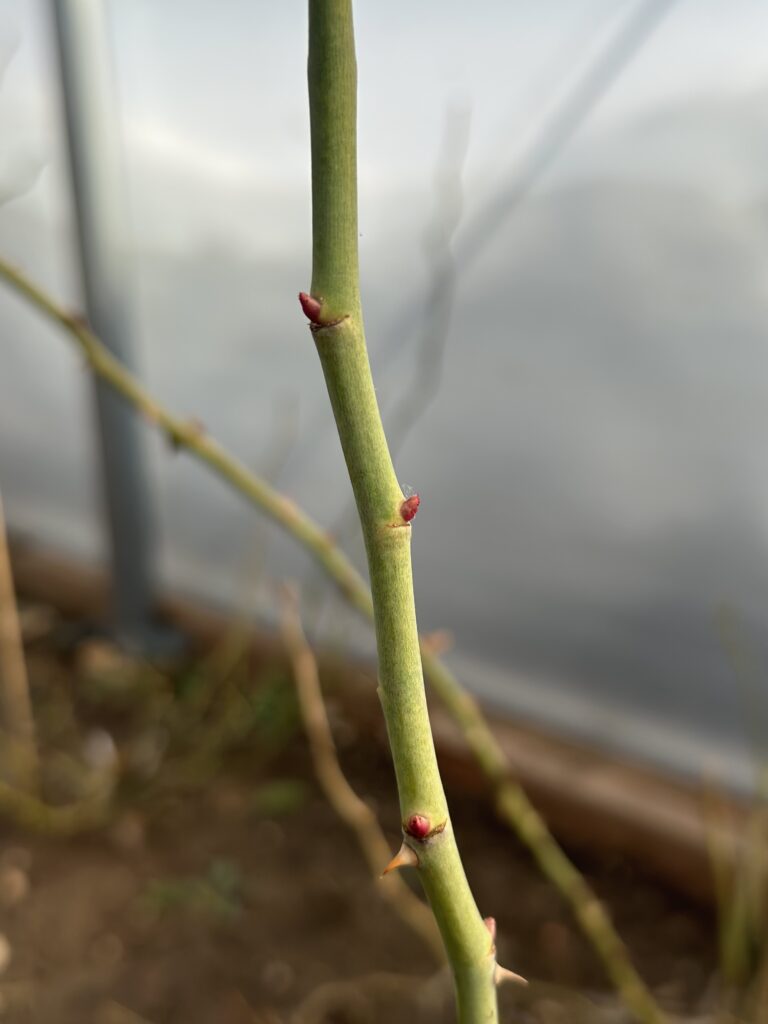
Prepping and watering beds in the high tunnel will likely be a challenge this year. This is my first spring growing in a high tunnel, so it will be interesting to see how it goes. The sides are currently barricaded by snow, so one of the biggest challenges right now is that it actually gets super hot in there on sunny days, even when temps are in the teens and the front door is wide open. When the snow thaws, we should be able to have better ventilation, but there will also likely be a little flooding (hopefully not much). On the flipside, we cannot turn on our water in the field until after danger of frost, so everything needs to be watered by tank (we hook up a 25-gallon water tank to ATV). It will be interesting how this all plays out, but excited.
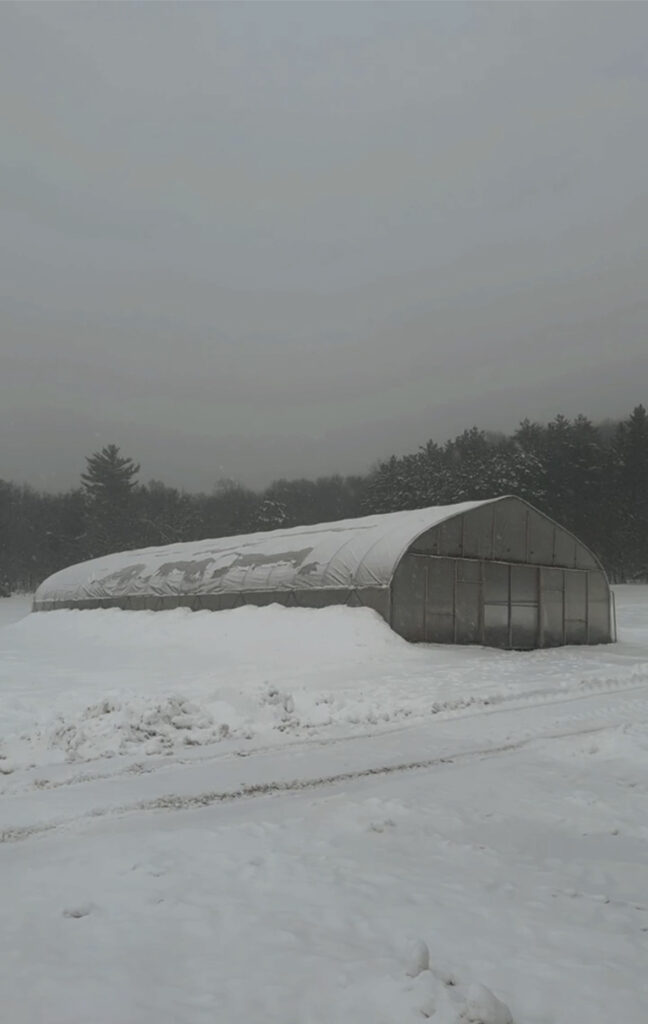
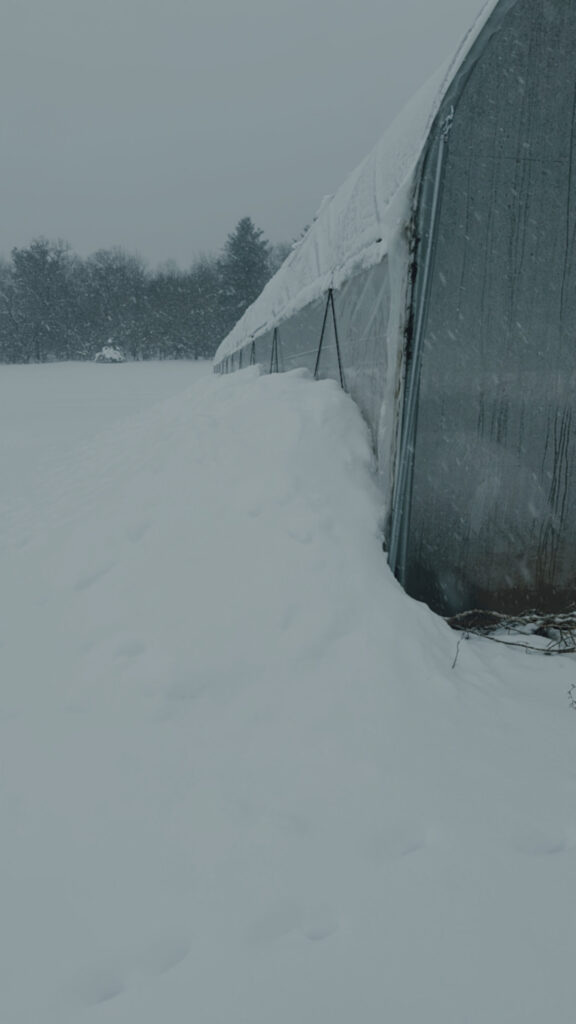
Soil Test & Fertility
Although we cannot test the soil outside yet, I thought this was a good time to talk about soil fertility and soil tests. Healthy plants above ground start with healthy soil below ground. In order to have healthy soil, you need to feed it the right nutrients (just like feeding your body nutrient-dense foods). You want to test your soil as soon as you can, so that you have enough time purchase and apply amendments to your soil.
Our Farm
Hands down, our biggest challenge at our farm is soil fertility. I took a soil sample of our fields when we moved to the farm in Fall 2019. We knew this old, conventional crop field was craving some major nutrients, but we did not know just how much.
Our soil test came back with organic matter at 0.06% (I’ll never forget this number). Yikes. A typical lawn is 2–4 percent. In general, soil organic matter levels have fallen from 5-6 percent to less than 3 percent on most cropland soils.
Less than 1 percent is about what you’d find in a desert, oy! Which makes sense, because our field is also about 80 percent sand. At least we have good drainage?
I knew I had my work cut out for me. Increasing soil fertility organically does not happen overnight. In fact, according to the NRCS, it can take 20,000 pounds of organic inputs, such as crop residue, to increase the actual soil organic matter by just 1 percent. In 2021, we had increased our organic matter to 1.4%. This is still quite pitiful, but we more-than doubled it, which is no small feat. I’m curious to see where we’re at this spring.

Increasing soil fertility is our number one priority, and the reason we’ve devoted so much time to learning about it. I wrote an eBook that includes everything I’ve learned about soil fertility thus far. You can find it here. It discusses plant essential nutrients, soil microbes, fertilizers, and soil tests. We look at how to calculate fertilizer requirements based on test recommendations, explore organic versus synthetic amendments, and discuss the difference between compost and fertilizer. We’ve also included the exact list of amendments we use to grow flowers, vegetables, and herbs on our farm.
Year to year, the amount of amendments does change based on our soil test, but the principles above always apply. This is why starting with a soil test is so important! Adding an unnecessary amendment can cause an imbalance that not only negatively impacts the soil, but also creates an extra needless expense for you. This is how I believe our soil ended up so out of whack in the first place. The phosphorous levels actually said: off the charts. An imbalance of this nature can tie up other nutrients. I suggest testing each area you plan on planting separately. We have two fields that are separated by our driveway, and the soil results are different for both. The east field had *excessively high* potassium while the west field was *excessively low*. Get a test, so you’re only adding what you need.
When to Test
According to our UW Extension: you can sample the soil anytime as long as it is not frozen. It is recommended to sample in early spring or late fall to assure that you will have the test results before you need to amend your soil. It generally takes two weeks for the laboratory to complete the soil analysis. It is important to avoid sampling soon after applying fertilizer—this would only tell you how much you just added, not what your soil really needs! Soil nutrient levels do not vary wildly from year to year so checking every three to five years is sufficient.
Collecting & Sending Your Sample
I suggest googling: “[your county] extension office soil test” and following the directions. Ours recommends collecting separate samples for areas that have been managed differently (so, for us, we test the east field, the west field, and the high tunnel at the home farm, as well as the AirBnB fields all separately . . . Matt and his dad plant a variety of fields at both our farms, and those all get tested too . . . we send a lot of soil samples in, HA).
For reference, our UW Extension provides the following directions (this is what I do, and I probably take 8–10 samples from each area):
1. From each area to be sampled separately, remove any overlying mulch, compost or sod. Soil samples should be collected from the top 5-7 inches of soil. Collect approximately one cup of soil with a clean trowel or shovel at four random locations and ten random locations if using a soil probe.
2. Place the four or ten soil samples collected from a distinct sampling area into a clean plastic container and mix those samples together thoroughly. Samples from different areas should not be mixed together. Remember, the sample should only contain soil and no organic matter (you want to test the soil, not the mulch or sod).
3. One cup of soil from each area to be analyzed should be placed in a heavyduty plastic or soil sample bag for analysis.
4. Label the bag with your name and contact information and send it to a soil lab.
5. Repeat this procedure for each distinct sampling area or your yard or garden.

Business Model: Delivery
I’ve gotten a few requests to talk further about our business models, so this month I thought I’d discuss our first business model and one we still have today which is our Friday deliveries. Our first year, I had no idea how we were going to sell our flowers, but Matt and I both knew we did not want to do farmers’ markets. Don’t get me wrong, I love going to farmers’ markets, and many growers thrive in this model.
But for us, we just sort of knew in our guts it wasn’t really for us. First of all, we didn’t feel like we could spare that much time during the weekend, especially when this is when we get the majority of our actual farm work done.
Second, don’t hate me, and I cannot believe I am going to say this out loud, but I hate small talk. So does Matt. Also, he’s an introvert. I *love* deep conversations, even with total strangers, and we will make new friends in the most-random places. Like we could legit make new friends at the farmers’ market . . . as patrons, when it’s by chance. However, having to sell things AND make small talk, we’re just too awkward.
Third and probably most importantly, given our limited time, I only wanted to arrange flowers that I knew were sold! I didn’t love the idea of spending all night before the market putting together flowers and then not selling them because the market was slow or weather was inclement or whatever other reason. I’m putzy at making market bouquets. I know good flower farmers make them in a minute, but that’s not me. I think it’s because I know they’re going to someone who intentionally made a decision to order from us, so I futz and fiddle over them.
Could we have sold more at a farmers’ market? Maybe, but I’ll always prefer a guaranteed sale. But again, some people LOVE market and socializing!
I also figured that ordering flowers is a successful business models for florists, so why not a farmer-florist? Florists are not usually creating arrangements with the hopes that someone *might* buy them at a market, no way! And my IC has always been someone with elevated taste that is purchasing something because of the thought, time, and personal design put into it.
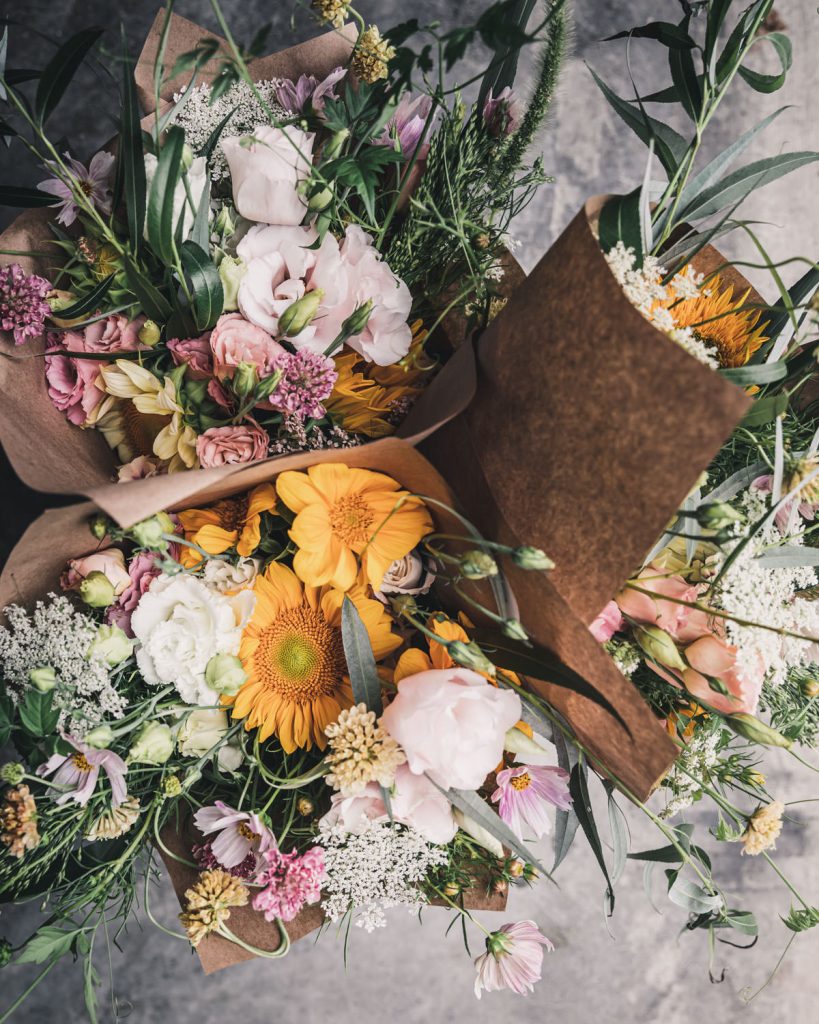
We also needed things to be efficient. For that reason, we decided that sales would be channeled through our website and then we would drop the flowers off at business locations for customers to pick up. As it turned out, this decision was important, because markets were a no-go our first season anyway. Why? Covid happened. Yes, we started our business during covid, oy!
We didn’t grow spring flowers our first season (well I grew flowers, ha, but not for the purpose of selling). So by the time we had something to sell in summer, things had calmed down in our area.
Earlier in the year, I put out a post on social media asking if any businesses would be open to being a pickup location. I still remember how nervous I was putting that post out, afraid no one would answer or think it was weird. And I was prepared for that to happen (also, this is OK, people are busy). If no one responded, I was going to personally reach out to some businesses, but to my surprise, two responded: a coffee shop and chiropractic business.
Since then, other businesses in the area have actually reached out to *me* to be drop-off/pickup locations. I’ll forever be grateful to them for their openness and kindness, especially as we’ve navigated doing something new together.
If you consider doing this, we think it’s a win-win, because the flowers make people happy and by allowing their locations to be pickups, people are brought into the businesses. That doesn’t mean it’s for every business and that is OK.
That first coffee shop actually ended being sold to new owners in 2021. The past owner let me know, so I called the new owners explaining our previous arrangement, asking if they’d be open to it. The new owner was pretty cold, I’m pretty sure he said something like: So, did they just do this to be nice to you, like a favor?
I was totally freaked out, but I stuttered on about how we thought it was mutually beneficial. Our customers had a close location to pick up their flowers (our farm is way out in the country) and it brought people in to the coffee shop (and they normally bought coffee . . . even Matt and I got coffee and breakfast every Friday). He said he was only one of four owners, so would check with them: “but to call back in a couple weeks because he’d likely forget.”
This is where I hung up the phone and crawled under the table, where I figured I would just live the rest of my life forever.
I never called him back. He didn’t seem excited about it and I did not want to feel like I was a burden to him or his business. I wanted it to feel aligned for both us. However, I knew our customers loved getting flowers AND coffee. So what I did do was come out from under the table after my embarrassment had slightly subsided, and I made a beautiful bouquet to bring to one of the best coffee shops in our area. It’s in an extremely fancy, boutique hotel/restaurant (nationally known).
I figured if I was going to embarrass myself, might as well go big or go home and that it couldn’t be worse than the last experience (but if it was, it wasn’t so bad under the table).
This biz supports local, organic, sustainable, etc., so I wrapped up my best bouquet, even brushed my hair, marched down there unannounced, and asked for the manager. In my head, I was going to be super smooth and cool, but in reality, I basically threw the flowers at him, while talking super fast about local flowers, and I’m surprised he didn’t call the authorities for assault by flower and word vomit.
Thankfully, Michel was wonderful, and not only agreed to be a drop-off location but they now also display our flowers at their front desk. They are the kindest ever and we’ve also supplied mushrooms to their chef! (We cultivate mushrooms). Bonus is that a lot of people in our area have coffee here and eat at their restaurants, so they see our flowers (people have even found us this way, including wedding clients). And Matt and I love dropping off flowers here . . . the staff are super friendly, everyone gushes over the flowers, and we always get iced coffees to go 🙂
Anyway, I share this story because rejection sucks. And it can be so scary putting yourself out there! It sounds simple, but actually doing it takes some cahones. But doing things outside of our comfort zone, even when they lead to rejection, also holds many lessons. This model isn’t right for every business, and I learned that’s totally OK. Also, if a business opportunity doesn’t feel aligned for YOU, that’s the beauty of having your own business: you don’t have to do it! I truly believe the universe has our back, and letting go of the one opportunity actually led me to an even better one.
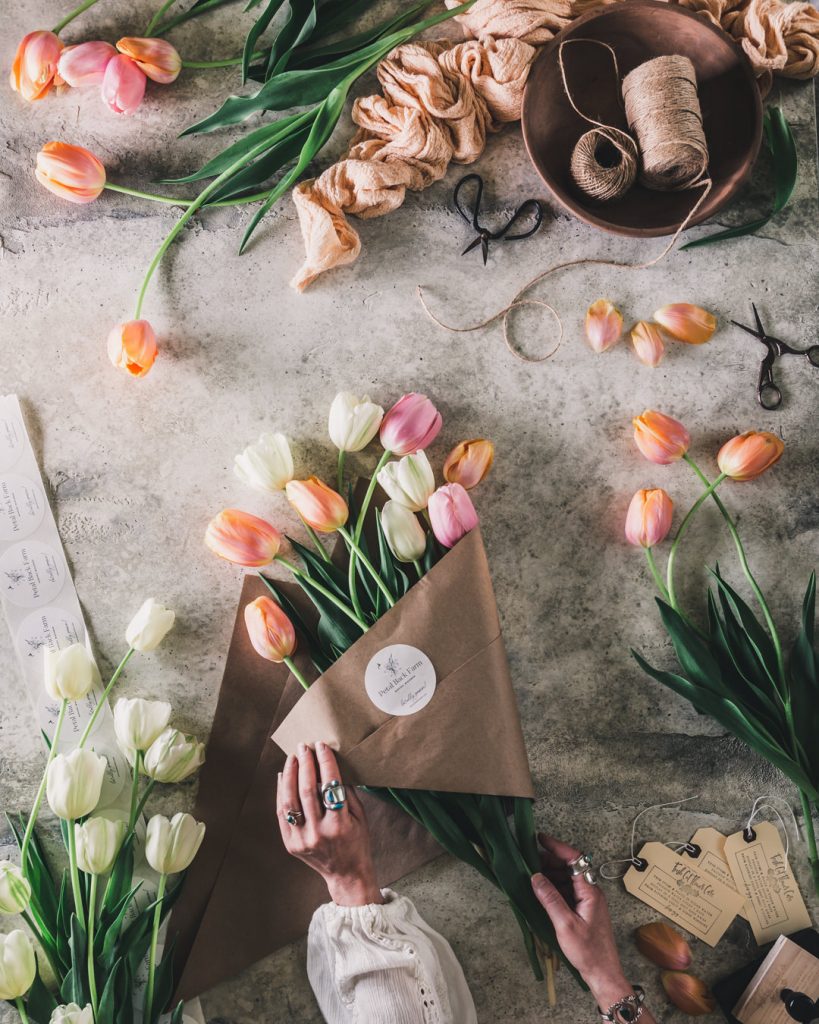
So what does this look like logistically?
You can see an example of how the pickups work on our website here. I usually update the inventory on our website each week and send out a newsletter and post on social media. I like to have all orders in by noon Thursday. This is because I arrange the flowers and wrap bouquets on Thursday night. Then, on Friday morning, we drop off flowers to each of the business locations.
We’ve found that most businesses actually prefer a list of orders/customers, so I’ll create that, but we leave this up to the business. I always ask our customers to reach out to me if they have any issues, and I also let the business owners and staff know that I have zero expectation that they should troubleshoot. If anyone has issues, I leave business cards taped to the black buckets with our information.
We have had a few hiccups, like a gal sent her husband to pick up flowers, and he took all the bouquets in the bucket instead of the one she ordered 🤣. Everyone was a good sport about it. But for the most part, it runs smoothly.
In 2021, we also added delivery after customer requests. We have it set up so that we only deliver to specific ZIP codes, and you can see how this is laid out on our website here. Checkout only allows the certain ZIPs, which is nice, so there’s no back and forth questions if delivery is possible to such-and-such location. These also happen on Friday mornings, and orders need to be in by noon Thursday.
For now, we keep deliveries to Fridays, because harvesting, arranging, and delivering for one day a week is a lot when you work full time (at least for me it is). P.S., I do have a very flexible job, so everyone on my team is aware that I’m delivering flowers Friday mornings. I’m usually back online by 11:00am. We may add more delivery days in the future, but for now, this is manageable for us. Occasionally, we’ll deliver large orders different days of the week (Matt or his mom will deliver these).
We also deliver flowers to our florist customers on Fridays. I have one florist I’ve gotten to know well who we allow to drive out the farm if she needs flowers on different days. But she’s a rare exception, because she knows how to get here. I occasionally have florists who want to order other days of the week, and we’ll deliver if feasible.
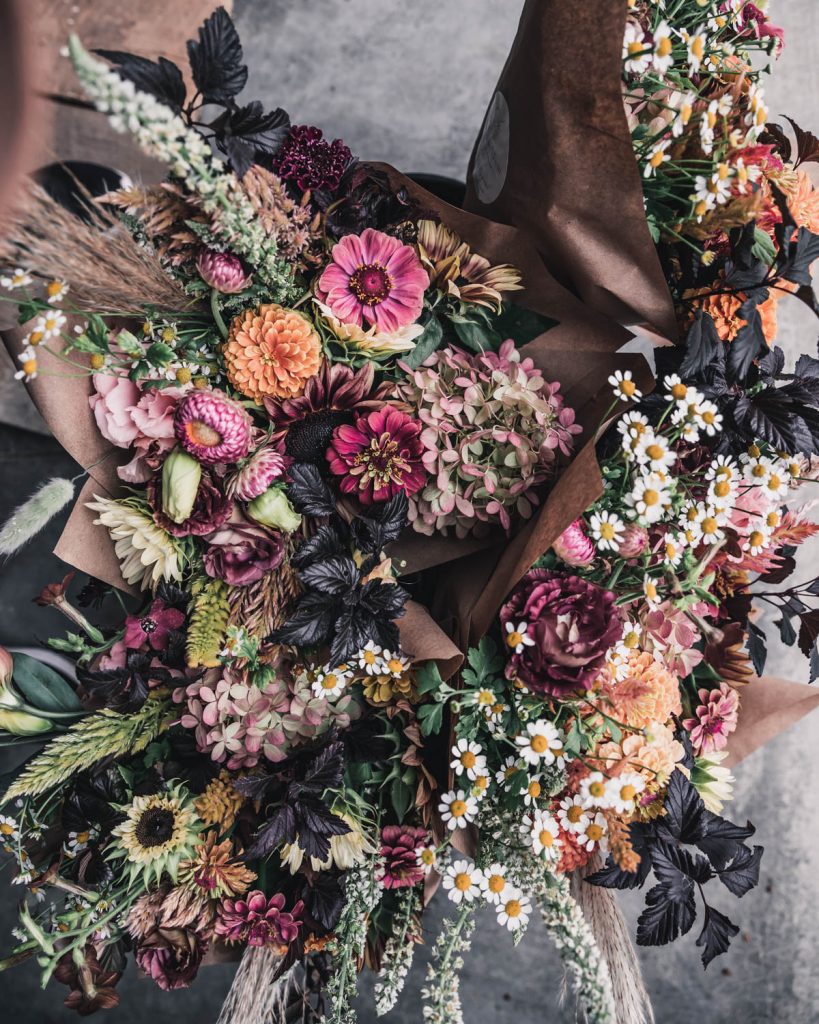
For delivery, we use this Seminole Delivery system, and we seriously love it. It’s pricey, but my gah, traveling with flowers is tricky business. The pegs allows you to support just about any-size vase or bucket, which makes it really versatile (wonderful for wedding deliveries). Plus, it’s super easy to cut down pvc pipes in whatever size you want (though they do also send some).
You might be wondering, do we allow farm pickup, and if not, why not?
We don’t, the exception being my florist friend and weddings/events (if clients have large orders they can pick up at the farm and there’s protection covered in the contract, but most choose delivery). Having people come to the farm is just a bit too much logistically for us right now.
One, it’s a time constraint to be available when people stop by.
Two, our address does not show up in GPS (directions take you to a random field miles away), even our mail carriers have had to stop at neighbors’ houses to ask directions or borrow a map😳. My cousin Maria got so lost she was bawling by the time she got here. I felt bad until she stopped crying, and now we still laugh hysterically about it, but I can’t image if a customer got that lost.
Three, we don’t have insurance coverage for visitors or restroom facilities.
Four, if I’m being totally honest, we’re private people and the farm is a total mess sometimes, HA! It is definitely a working farm not a show farm. We love entertaining and having friends over, but our friends could care less about the field or the weeds (they’re here for smoked ribs, fresh garden veggies, and good drinks).
We may open up for visitors at some point. Sometimes though, complete strangers are really pushy about it, and that makes me feel . . . weird (but I’ve also met people through flowers that have become dear friends, most people are beyond awesome). Honestly, I’m honored anyone would even *want* to come here. But if we do it, I want it to be a memorable experience (like happy hour in the flowers?!), so I’d like to spend time getting it right, and right now, I don’t feel like I have adequate time to make it the experience I would want it to be.
That said, starting the farm was with the goal of sharing the beauty of nature! For this reason, we are planting more and more flowers at the AirBnB, including a *huge* portion of our dahlia collection, and throwing around the idea of moving the peony production over there too. The AirBnB is covered for people to be on the property, so it just seemed like a natural place to start (and it’s not where we live). I also haven’t shared this anywhere yet, but we’re planting 800 Christmas trees there this spring, so hopefully that space becomes a place for our community for years to come (and because I basically want to live in a hallmark movie).
OK, sorry, this month has gotten way more into my personal business ideologies than I anticipated, but these are the things I tend to agonize over, and I just kept typing. Growing plants is my comfort zone, whereas selling them has been an area of growth for me, and I’m still working through it. The cool thing about flower farming is that I truly believe there are SO many ways to be successful. For example, agrotourism is extremely lucrative! But you definitely need to be comfortable with having people on your property. The sweet spot is finding what works best for you, your business, and your customer base.
And try and remember that your business is *for you*! I loved hearing Erin Benzakein and Marie Forleo talk about growing a business on your own terms, the importance of trusting your gut, and what it really takes to stay true to your heart and make it as an entrepreneur. And it’s something I constantly need remind myself. It’s sometimes difficult not to say yes to everyone and everything. But for me, I started this business with a dream of creating a life that I love, and it’s OK if that’s not for everyone.
And trust me, it’s not for everyone, because people tell me their opinions, HA! I have people tell me they won’t buy flowers unless they can come pick them up at the farm, and that’s totally fine. Maybe I’ll make that an option, but if not, they’re just not my IC. What I try and do in these scenarios is recommend another farm that is a better fit.
In my case, Sweet 16 Farm in Houston MN. Sarah’s farm is *amazing* and she is a super-talented grower and designer (and just a gem of a human being in general). She offers pick-ups right at her farm and also has amazing on-farm events.
P.S., thanks to Caylee’s question for reminding me that I meant to include this point!
It’s important to get to know other growers in your area, because you likely both have strengths that can make up for each other’s weaknesses (like Sarah being a rockstar at on-farm experiences). While we only connect occasionally, we have reached out to one another if we are short on flowers, colors, or other advice. Sarah and I have also referred many weddings to one another (when either of us gets too busy or burnt out). Not every grower is open to this kind of relationship, but most are . . . just remember to be considerate of their time (time is precious on a farm) and boundaries if you reach out first: community over competition is always a win in my book.
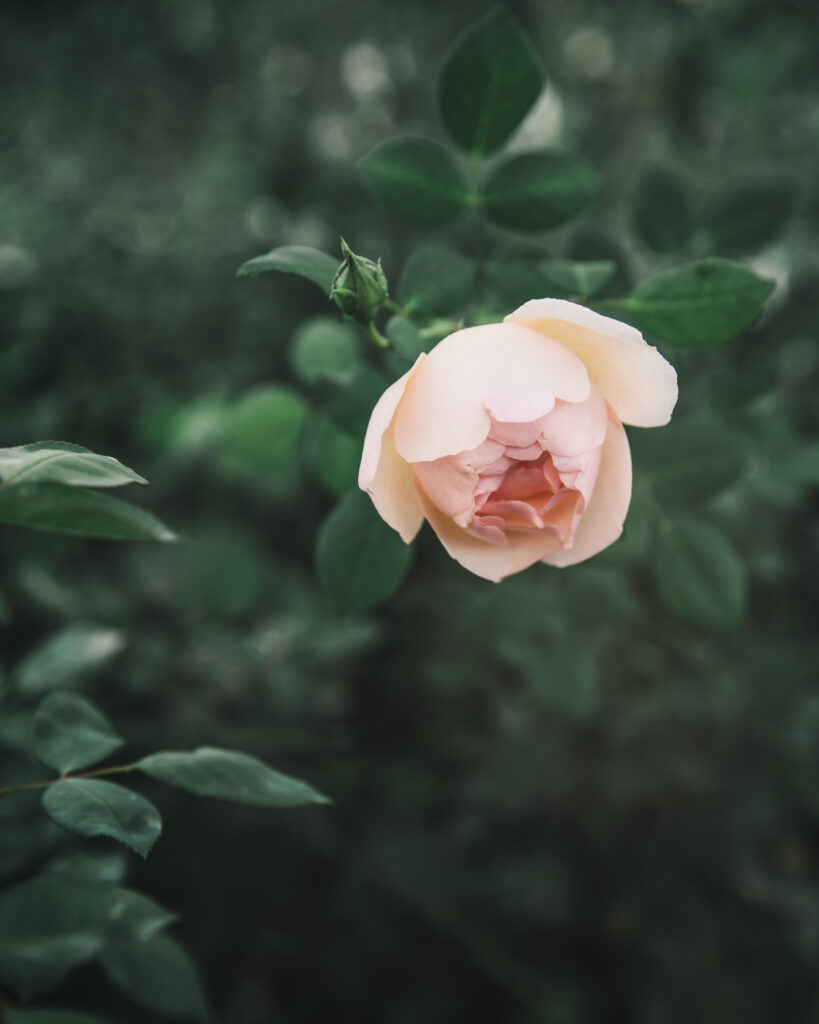
Business & Taxes
While we talked more in-depth on taxes in January, just a friendly reminder to my U.S. pals that it’s tax season. March 15 deadline for partnerships and April 15 for most other filing. However, you can also file for an extension! And though I don’t want to sound like a broken record, I can’t stress enough how invaluable a good accountant is. I hate talking on the phone, but I actually enjoy talking to my accountant because he is so nice and answers my questions in a clear way. I tell Matt that he reduces my anxiety about 100 points every time I talk to him. Sometimes, I stress myself out about stupid things and google searching for hours when he can help in seconds. I’ve learned to just ask instead of feel dumb for asking and letting anxiety build up. I promise now that tax season is almost done, I won’t mention it again, ha.
Every month, I review our income and expenses and apply the profit first method. If you haven’t read the book, I highly suggest it, but basically for everything that comes in you are making target allocation percentages for things like profit, owner’s comp, taxes, and expenses. It’s actually recommended to do this twice a month, but I consider it a win if I do it once. If those terms are foreign, that’s OK. He breaks it all down in a simple (and even entertaining) way.
My only regret with this method is not starting it sooner. It’s given me more confidence as a business owner, especially as I do not come from an entrepreneurial family. If you’re not ready to dive on into the book, it’s important to understand your income and expenses. I don’t even use a fancy system like quickbooks, just a spreadsheet!

Wrap Up
OK, my friend, that is IT for March. What do you think? Did you find some useful nuggets? Is there anything that’s unclear or you wish I would have covered?
This link will be live until the end of April, at which point you’ll get a PDF copy, so you can always refer back it. You can also use the buttons below to save this as a PDF or print at any time. T
ip: use the find shortcut (Ctrl+F on a PC or Command+F on a Mac to search for any word or term either online or in PDF format).
Have any questions or something you want to share with me or others? I know I say this ad nauseam, but I truly believe in the power of the collective and that we all have something unique and powerful to share, so please leave a question or share a comment below. We’re all better for it, and I thank you in advance!
Cheers pal!
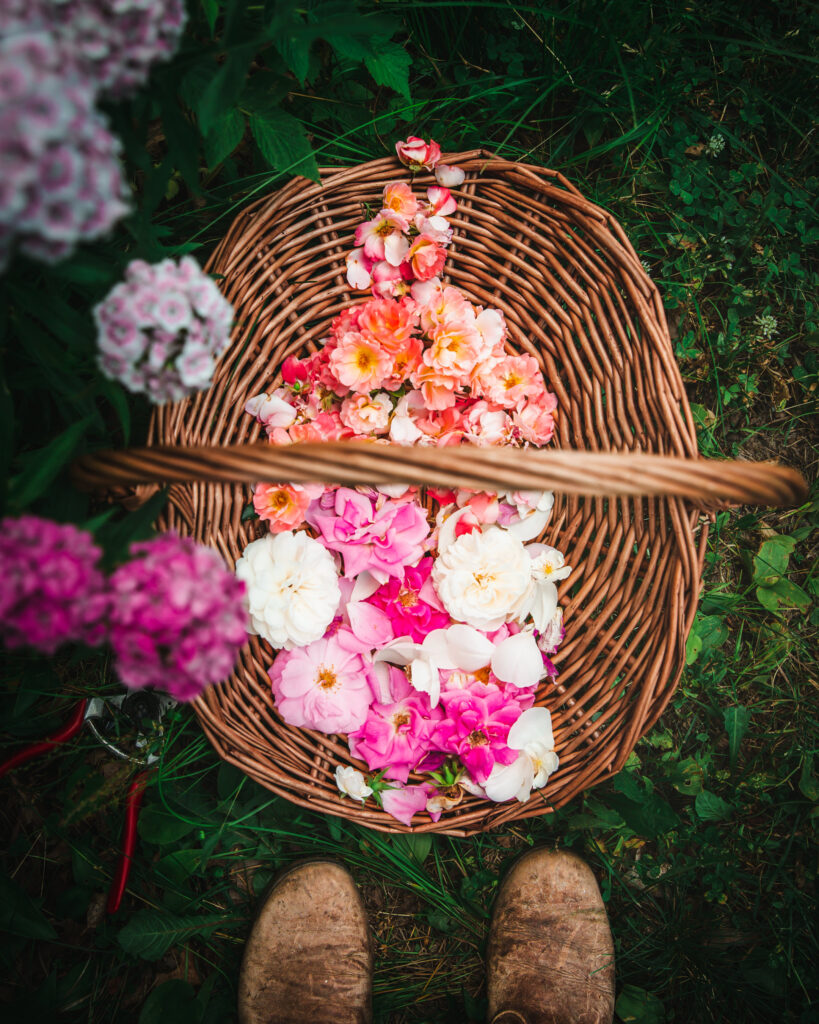
Hi, I thought you had previously mentioned doing u-pick flowers this year. Are you not doing that anymore since you mentioned that customers don’t really come to the farm? Thanks.
Hi, Caylee:
We don’t intend on opening a U-Pick this season, but perhaps I misspoke (I’d like to correct it if so, do you happen to remember where you saw this?). Wouldn’t be the first time I made a blunder, but U-Picks are almost an entirely separate business model that we don’t have the capacity to accommodate . . . at least not yet (more on that below if that interests ya or anyone else).
I have spoken about opening up the farm for pick-up or potentially on-farm workshops or events in the future. Pick-up meaning customers have the option of picking up their order at the farm. Or workshops where we harvest and design (so perhaps U-Pick in that sense). My heart just keeps telling me to hold off on this, it hasn’t quite marinated yet 😜 If and when we do decide to proceed, there are logistics we would still need to figure out (liability insurance, accessibility, operating hours, marketing, website updates, parking, directions, bathroom facilities, etc). With my full-time job, I just haven’t been able to dedicate the time I’d like to it (I would want it to be a well-thought out intentional experience).
I actually meant to mention this in the post and forgot, but whenever people are looking for something that we don’t offer, I try and recommend another farm! In my case, Sweet 16 Farm in Houston MN. Sarah’s farm is *amazing* and she is a super-talented grower and designer (and just a gem of a human being in general). I’m not sure if she has U-Pick, but she definitely has on-farm events and pickups.
And thanks mucho for this question, because it reminded me I to add a note about this above, which I did, and credited you 🙂
Back to U-Picks: I thought I’d share what I’ve learned in case you or anyone else is interested in this biz model, though please note that my knowledge is limited to my research and what I know from normal production! U-Picks can be awesome, but it’s important to note that they are usually considered an entirely separate entity, and thus require additional labor, materials, marketing, location, liability, etc. Usually, flower farms are either solely U-Pick operations or actively manage their U-Pick and regular production separately, whether by physical separation or customer education (this is not the only way to do it, but it is the model we’d follow if we did it). There are a few main reasons for this. For the highest-quality blooms, most flowers in normal production are never in bloom in the field or are cut on a precise schedule. So, if we’re managing the field for maximum potential, the field is not all that “pretty” with lush, open flowers, ha! But it also makes it very difficult to time in conjunction with a U-Pick. So, flowers for a U-Pick are typically different varieties and on a different schedule than those in regular production (though there is some overlap). U-Picks generally have more come-and-cut again varieties so that the field is in bloom for a longer period (zinnias, branching sunflowers, cosmos, celosia, etc.) and must be dead-headed regularly. Along that same line, most growers want their production field (and higher-investment crops) separated from their U-Pick. Most (though I’m sure not all) are not going to have flowers like lisianthus or iceland poppies in their U-Pick because they are a high-dollar investment for the grower (same with any high-price seeds). Though, they may offer these for sale by the stem during the U-Pick. Of course, these aren’t hard and fast rules, and I’m sure there are *many* ways to do this successfully. U-Picks can be an amazing and profitable business model that can simultaneously be wonderful for your community, but they definitely take some planning and foresight. If you’re interested in this model, Lyndsay from Wildroot Flower Co has years of experience and agrotourism is at the heart of her farm, so I’d give her a follow. She and Shannon have a fabulous episode on this on The Dirt on Flowers Podcast too (Shannon also discusses how she has been able to do U-Pick in her regular production fields)!
OK, I hope that helps 🙂
This may be a “DUH!” question but I was curious, how did you find your account? Did you already know them? Web search? Recommendation?
Mollee, you crack me up because you totally get me. The Dept of Ag guy just reassured me this week that there is no such thing as a bad question, and I was like, “challenge accepted.” Anyway, this is a great question, at least if I’m interpreting it correctly that you’re asking how I found our accountant (if you mean something else, let me know). And it was by recommendation! Matt’s brother has encouraged us to start a business since day one with the farm, my photography, etc. He has always cheered us on 🙂 Over drinks and tacos one evening in Breck, he was urging me to go for it (back when all of this was just an idea) and I shared all my fears, like the running the biz part, and he told me: “don’t overthink it, you’re basically already doing it. Just get a separate card/account for purchases and hire an accountant, the rest will fall into place. I’ll send you my accountant, they are super nice” (he has a friend from high school that works there, for anyone local: Gillette & Associates and they are awesome). Mike is an angel, my accountant is an angel. Cannot recommend a good accountant enough!